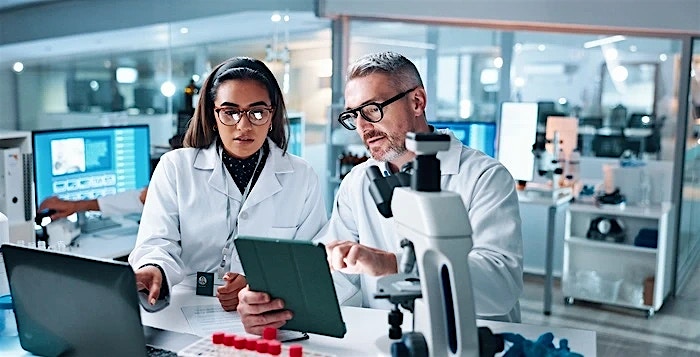As we navigate 2025, the Engineering Research and Development (ER&D) landscape is undergoing a pivotal transformation — driven not only by technological acceleration but also by economic recalibrations, geopolitical shifts and the growing need for sustainable, purpose-driven innovation. Inflationary shocks, supply chain vulnerabilities and shifting global alliances have prompted a re-evaluation of R&D priorities. Yet through it all, one constant remains: innovation is non-negotiable.
At HCLTech, we believe the future of ER&D lies not only in building smarter products but in engineering resilience, intelligence and sustainability, into the very fabric of modern enterprises. Here are the defining trends shaping ER&D in 2025 and beyond.
Balancing near-term demands with long-term innovation
Faced with economic headwinds, many organizations are recalibrating their R&D strategies, shifting from exploratory innovation toward pragmatic, results-driven investments. Cost optimization, supply chain agility and operational continuity have become immediate priorities. Yet this is not the abandonment of ambition — it’s a dual-speed approach where short-term execution coexists with future-focused innovation. Investments in AI, quantum computing and sustainable design continue, particularly in high-growth areas like autonomous systems, green energy and intelligent manufacturing. This balanced model is fostering more durable and resilient innovation across industries.
The rise of digital thread and digital twins
Manufacturing is undergoing a profound shift toward hyper-connectivity, powered by digital thread and digital twin technologies. These capabilities enable end-to-end data continuity across the product lifecycle, from concept and engineering to production, service and beyond.
Digital twins are emerging as strategic assets, allowing companies to simulate real-world conditions, optimize performance and predict maintenance needs. Combined with the digital thread, which provides traceability and integrated insights, these technologies are driving efficiency, quality and agility. As smart factories evolve, digital twin ecosystems will be foundational to insight-driven ER&D operations.
Generative AI: Redefining the innovation lifecycle
Generative AI (GenAI) is reshaping how R&D teams operate, enabling autonomous design iterations, optimizing performance and accelerating product development. In sectors like aerospace and automotive, it’s driving lightweight engineering; in consumer tech, it’s enhancing user-centric design and in industrial settings, it's optimizing factory layouts and energy use.
More than a productivity tool, GenAI is enabling co-creation between human engineers and intelligent systems, pushing the boundaries of speed, scale and imagination in product innovation.
Digital convergence: Breaking barriers, building ecosystems
Digital transformation has matured into a force for industry convergence. As sectors collaborate to address complex challenges, we’re witnessing powerful cross-domain alliances:
- Automotive and semiconductor companies are co-developing chips for autonomous EVs
- Consumer electronics and healthcare firms are embedding diagnostics into wearable tech
- Industrial manufacturers are deploying IoT and edge AI to enable predictive maintenance and real-time monitoring
This convergence is creating entirely new market categories and redefining how value is delivered. In the era of ecosystem innovation, cross-domain collaboration will be a key driver of competitive advantage.
Regionalization and resilient supply chains
Geopolitical volatility and pandemic-era disruptions have pushed companies to rethink global supply chains. ER&D strategies now prioritize regionalization, nearshoring and local innovation hubs. Technologies like AI and blockchain are enhancing transparency, improving predictive planning and increasing responsiveness. Automotive and electronics sectors are leading the shift — building resilient, decentralized supply chains to ensure continuity, reduce lead times and mitigate future risks.
Sector-specific R&D investment shifts
While R&D investments remain strong overall, capital deployment is shifting strategically across industries:
- Technology and software: Investing heavily in cloud-native platforms, AI/ML and digital product engineering
- Semiconductors: Accelerating chip design to meet growing demands from AI, 5G and edge computing
- Automotive: Driving innovation in EVs, autonomous mobility and connected vehicle platforms
- Industrial manufacturing: Prioritizing digital twins, intelligent product design and sustainable automation
While some sectors pursue disruptive innovation, others are focusing on targeted, incremental improvements aligned with evolving customer demands and market fluctuations.
The talent imperative: Engineering the next generation
As technology advances, the demand for skilled R&D talent is outpacing supply. The global shortage of engineers is intensifying the war for skills — prompting organizations to invest in academic partnerships, internal reskilling and collaborative ecosystems.
At HCLTech, we believe innovation thrives in ecosystems. We're fostering environments where engineers, designers and data scientists can collaborate across boundaries, empowered by platforms, purpose and the freedom to solve complex challenges. Future-ready enterprises will be those that not only attract top talent but nurture it through lifelong learning, meaningful work and value-generating collaborations.
The road ahead: Engineering with intent
ER&D has evolved from a back-end product function to a front-line driver of enterprise transformation. As we look to the future, the themes shaping investment — sustainability, GenAI, digital convergence, supply chain resilience and talent development — will define who leads and who lags. Thriving in this new era demands a dual mindset: executing on today’s imperatives while boldly investing in tomorrow’s possibilities.
At HCLTech, our Engineering and R&D Services (ERS) division, partners with global enterprises to co-create solutions that are scalable, sustainable and human-centric. In a world of continuous disruption, it is the organizations that engineer with intent — balancing near-term performance with long-term vision — that will define the next era of innovation.
Special thanks to Nikita Sarda for her valuable contributions, bringing depth and clarity to our narrative through her strategic insights.





